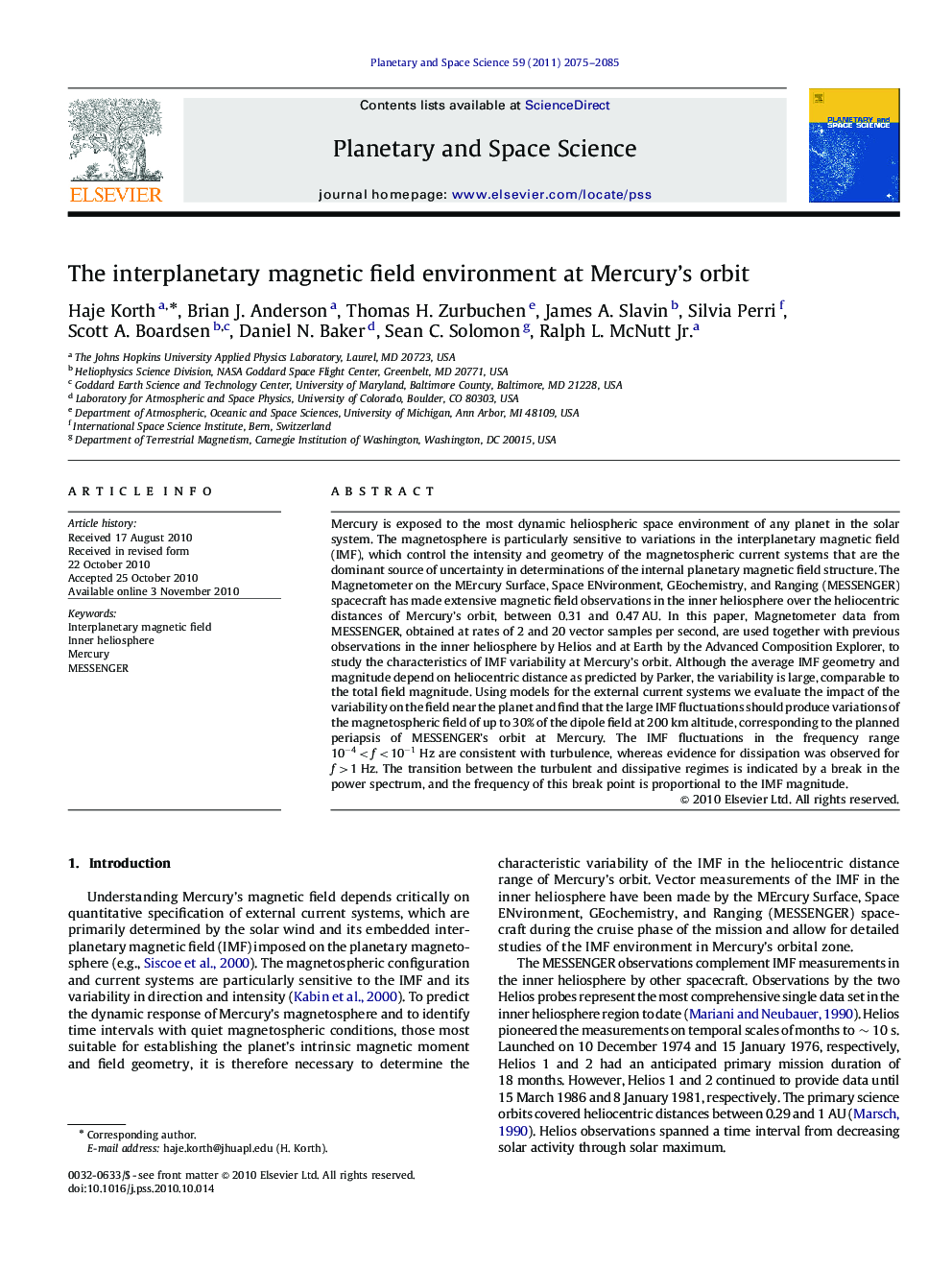| Article ID | Journal | Published Year | Pages | File Type |
|---|---|---|---|---|
| 1781614 | Planetary and Space Science | 2011 | 11 Pages |
Mercury is exposed to the most dynamic heliospheric space environment of any planet in the solar system. The magnetosphere is particularly sensitive to variations in the interplanetary magnetic field (IMF), which control the intensity and geometry of the magnetospheric current systems that are the dominant source of uncertainty in determinations of the internal planetary magnetic field structure. The Magnetometer on the MErcury Surface, Space ENvironment, GEochemistry, and Ranging (MESSENGER) spacecraft has made extensive magnetic field observations in the inner heliosphere over the heliocentric distances of Mercury's orbit, between 0.31 and 0.47 AU. In this paper, Magnetometer data from MESSENGER, obtained at rates of 2 and 20 vector samples per second, are used together with previous observations in the inner heliosphere by Helios and at Earth by the Advanced Composition Explorer, to study the characteristics of IMF variability at Mercury's orbit. Although the average IMF geometry and magnitude depend on heliocentric distance as predicted by Parker, the variability is large, comparable to the total field magnitude. Using models for the external current systems we evaluate the impact of the variability on the field near the planet and find that the large IMF fluctuations should produce variations of the magnetospheric field of up to 30% of the dipole field at 200 km altitude, corresponding to the planned periapsis of MESSENGER's orbit at Mercury. The IMF fluctuations in the frequency range 10−4
